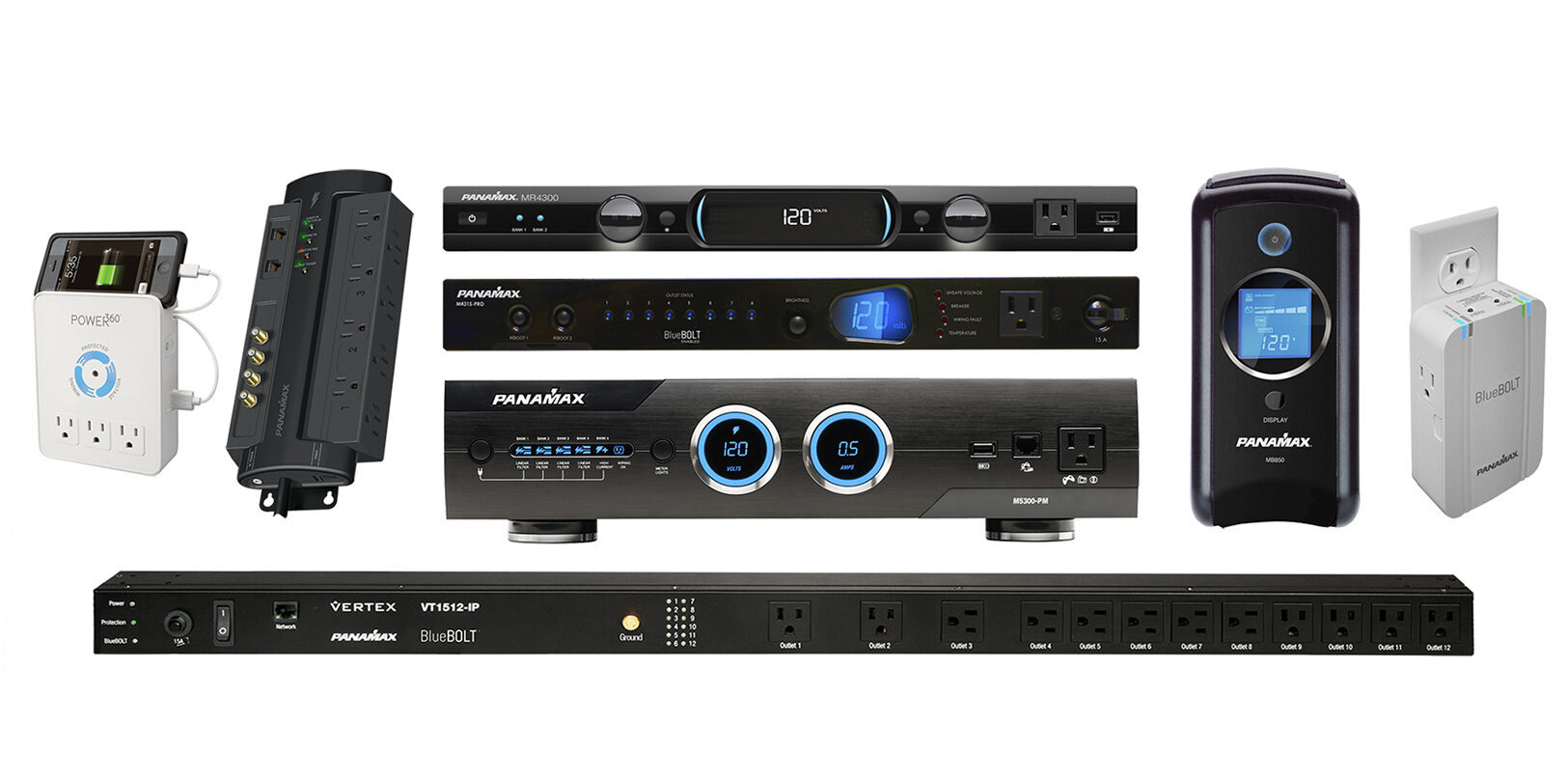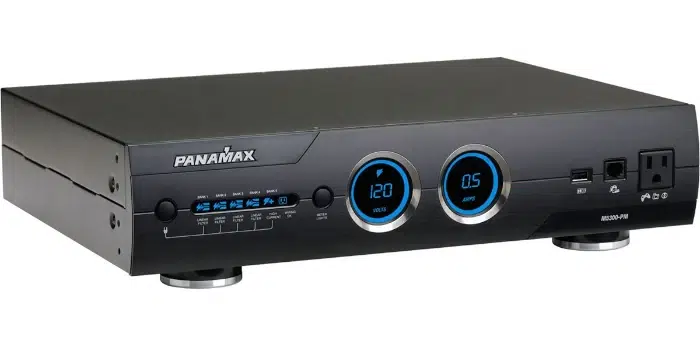A home theatre power manager (also called a power conditioner or power management unit) regulates, protects, and filters AC power for audio/video systems. It goes beyond a basic surge protector by actively managing voltage, filtering noise, sequencing startup, and preventing damage.
1. Why a Home Theatre Power Manager Matters
1.1 Protecting Your Equipment from Electrical Hazards
Power from the wall is not perfectly clean. Voltage spikes, brownouts, and surges—especially during storms or grid fluctuations—can damage the internal circuitry of TVs, receivers, amplifiers, and media players. A power manager absorbs or blocks harmful surges. It also shuts off output when voltage is excessively high or low. (Source: Tripp Lite’s power conditioner guide)
1.2 Stabilizing Voltage & Ensuring Consistency
Some power managers incorporate Automatic Voltage Regulation (AVR) that boosts or buck voltage to within safe margins, keeping output near nominal values. This capability helps when your region’s mains fluctuate ±10 % or more. (Source: Tripp Lite)
1.3 Filtering Noise (EMI / RFI) & Protecting Signal Integrity
Electrical “noise” (electromagnetic and radio-frequency interference) can ride along AC lines and enter sensitive circuits, causing hums, video artifacts, or distortion. Managers filter these unwanted signals so your audio/video gear receives cleaner power. (Source: ETEI)
1.4 Organized Power Distribution & Sequencing Control
Power managers provide a centralized hub of outlets with well-placed spacing, and often offer sequential power-up / down logic. That means source devices turn on first, then preamps, then amplifiers, reducing inrush surge stress. Some units also integrate trigger ports or remote switching capabilities.
1.5 Longevity & Reliability of Your System
By mitigating stress from voltage irregularities and filtering noise, components inside your system (power supplies, capacitors, regulators) endure lower wear. Over time, this leads to fewer failures and more stable performance.
2. Core Technical Specifications Explained
Understanding the technical side helps you choose a power manager that matches your system’s demands.
| Specification | Definition | Why It Matters |
|---|---|---|
| Clamping / Let-through Voltage | Maximum voltage allowed before suppression triggers | Lower value means better protection |
| Joule Rating / Energy Absorption | Total energy it can absorb during surges | Determines how strong a surge it can handle |
| Peak Current / Impulse Rating | Maximum transient current it blocks | Handles lightning or big spikes |
| AVR / Regulation Range | Range over which it can boost/buck voltage | Keeps output in safe envelope |
| Sequential Switching | Delay logic in powering devices in sequence | Prevents power-on surges |
| EMI / RFI Filter Type | Series vs shunt vs hybrid filters | Affects noise suppression and signal purity |
| Outlet Topology | High-current vs filtered vs isolated banks | Matches loads (amps, source, etc.) |
| Form Factor & Mounting | Rack-mount, vertical, shelf, desktop | Fits your system physical layout |
Key thresholds to look for:
-
Let-through voltage: ideally 330 V or less (UL standard).
-
Joule rating: ≥ 1,000 J for mid/high-end systems.
-
Current handling: 15 A or more in 230 V regions.
-
Filter mode: linear or series-mode designs often outperform simple shunt designs.
3. System Load & Electrical Setup Requirements
Your home theatre’s power manager must integrate with your home’s wiring.
3.1 Calculate Your Load
-
Sum the wattage of all your gear (TV, AVR, amplifiers, sources).
-
Convert to amps: Amps=WattsLine Voltage\text{Amps} = \tfrac{\text{Watts}}{\text{Line Voltage}}.
-
Add margin (20–30 %) above your expected peak draw.
-
Choose a power manager and circuit that exceed this margin.
3.2 Dedicated Circuit & Phase Matching
Allocate a dedicated circuit to the AV gear. Do not mix heavy appliances (air conditioners, refrigerators) on the same line. If you split gear across two circuits, ensure they belong to the same leg (phase) in your breaker panel to prevent ground loops and hums.
3.3 Solid Grounding & Wiring Quality
A power manager’s protection and filtration rely on proper grounding. Weak or intermittent earth ground degrades performance. Use quality wiring, avoid overly long runs, and separate signal and power cables to reduce coupling.
3.4 Inrush & Breaker Considerations
When turning on amplifiers or large gear, inrush currents can spike momentarily. Your power manager and circuit breaker must tolerate that without tripping. Some units offer soft-start or current limiting to mitigate.
4. Tiered Product Examples & Use Cases
Here are representative models (brands and features), adapted to modern markets. Use this purely for orientation; always cross-check local models and specs.
| Tier / Use Case | Model Example(s) | Distinct Features | Best For |
|---|---|---|---|
| Entry / Budget Systems | Furman PL-8C15 | Basic protection, EVS, linear filtration | Small living-room setups |
| Mainstream / Balanced | Panamax MR4300, MR4000 | AVM, level filters, remote monitoring | Typical home theatre with multiple devices |
| Rack / Pro Installations | Panamax M4315-PRO | 15 A, rack mount, remote control | Media racks & dedicated A/V closets |
| Compact / Vertical | Panamax VT1512-IP | Slim layout, 12 outlets | Tight spaces, side stacking |
| Audiophile / High-End | AudioQuest Niagara 1200 | Level X noise suppression, prime build | High-fidelity setups, premium gear |
Sources: Appuals product guide; EDMSauce on surge & filtering features; HomeTheaterForum high-tier model M5400
These models showcase how features scale — more outlets, stronger protection, advanced filtration, and remote control capabilities at higher tiers.
5. Step by Step Installation & Usage Best Practices
Follow this checklist to ensure optimal performance and safety.
5.1 Physical Placement & Mounting
-
Mount in a rack, shelf, or stable platform.
-
Leave air gaps for cooling.
-
Avoid stacking other heat-generating gear on top.
5.2 Connect Mains First, Devices Later
-
Plug the power manager into your wall outlet.
-
Then attach your AV components in designed sequence.
5.3 Distribute Load Appropriately
-
Use “high-current” outlets for amplifiers/subs.
-
Use filtered outlets for sources, DACs, preamps.
5.4 Turn-On / Turn-Off Sequencing
-
Many units allow delays: source → processor → amp → speakers.
-
Use remote trigger or built-in 12V trigger ports.
5.5 Monitor & Maintain
-
Periodically check voltage display, status LEDs, and ensure no fault lights.
-
Replace units or modules if the surge protection degrades or the manufacturer recommends replacement.
6. Common Misconceptions & Realistic Expectations
6.1 “It’ll dramatically improve sound always”
In stable, clean power environments, the audible difference may be subtle. However, its protection and noise suppression roles remain valuable. Communities advise that conditioners are for protection more than guaranteed sonic uplift.
6.2 “Any power manager is equivalent”
That is incorrect. Designs differ: series-mode vs shunt, filtering depth, regulation headroom, and outlet architecture. Higher quality units yield lower insertion loss and better consistency.
6.3 “A surge protector suffices”
Surge protectors help, but they do not regulate voltage, filter noise, or sequence power. A power manager offers layered protection and performance features beyond surge suppression.
6.4 “Power managers last forever”
They degrade over time, especially after absorbing surges. Some have replaceable modules, others require full unit replacement every 7–10 years (or earlier in volatile grids).
7. FAQs
Q1: Does a power manager reduce electricity cost?
A1: No. It operates passively (with minor overhead). It does not shrink consumption; it stabilizes power quality.
Q2: Can a power manager fix flickering lights in other rooms?
A2: Only if flicker arises from local AV circuit noise or mild regulation. Major wiring or circuit faults require an electrician, not a power manager.
Q3: Should I place multiple power managers in a system?
A3: Typically one main unit suffices. Sub-units may help if long cable runs or distributed zones exist, but introduce complexity and potential ground conflicts.
Q4: Can I daisy-chain another surge protector?
A4: No. Chaining diminishes protection and may void warranties. Use one properly rated power manager and no downstream strips.
Q5: What is the priority outlet order in sequencing?
A5: First: sources (Blu-ray, streamer) → middle: preamp / AVR → last: amplifier. In shutdown, reverse this.
Q6: Is rack-mount always better?
A6: Not always. If your gear is shelf-mounted or in cabinets, a vertical or desktop format may offer better fit and ventilation.
Q7: How can I tell when protection is degraded?
A7: Some units alert via LEDs or error logs. Absent that, after known surge events, replacement is prudent. Always heed manufacturer guidelines.
Learn More: Introduction: What Is a “3 Ton AC Unit”?
10 Hidden Meanings Behind the Safety Pin Necklace
Conclusion
A home theatre power manager is more than a convenience it’s a safeguard for your entire entertainment ecosystem. By delivering clean, stable electricity, it protects every component from surges, noise, and voltage drops that can silently damage your gear over time.
Investing in a quality power manager means investing in long-term reliability, enhanced sound and picture quality, and peace of mind. Whether your setup is a simple living-room system or a high-end cinematic installation, the right power management device ensures that every movie, game, or concert plays exactly as intended crisp, quiet, and uninterrupted.


